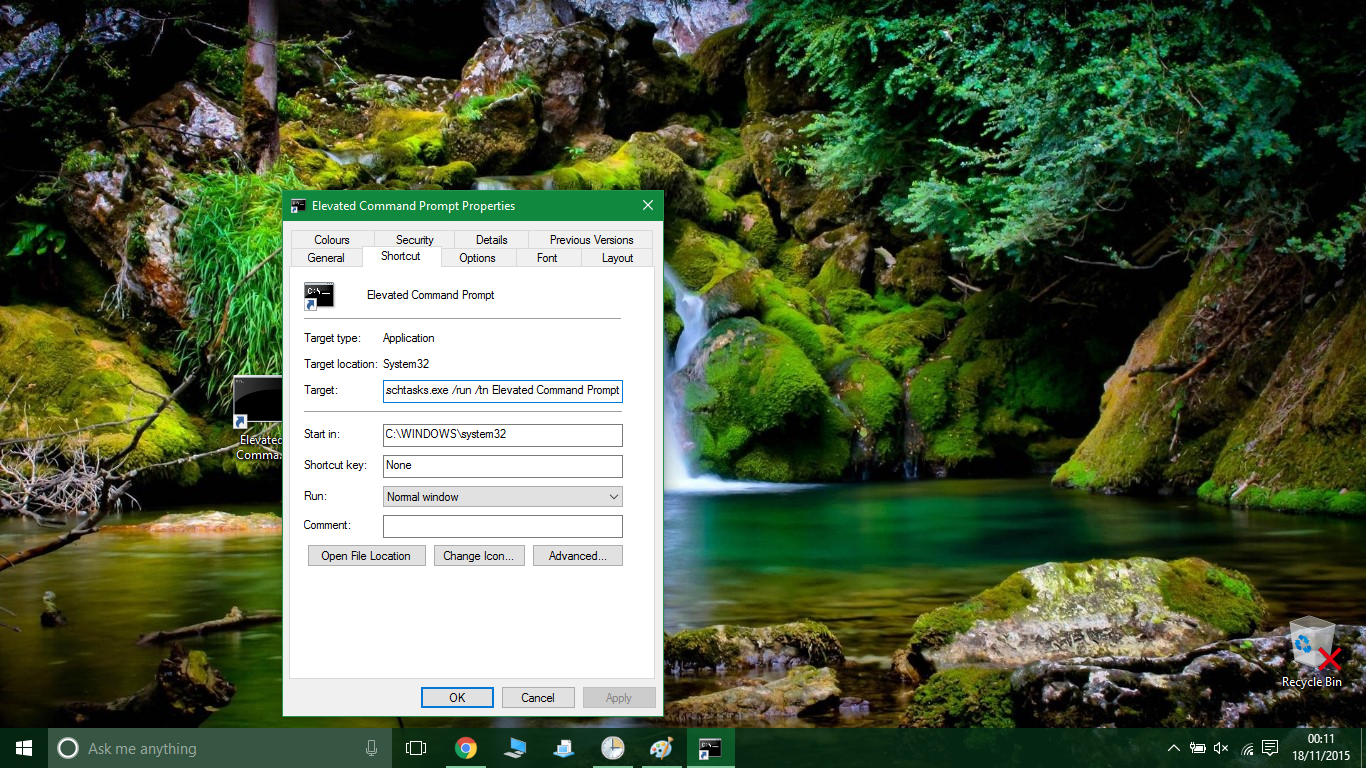Short bio
- Run Malwarebytes Scan Windows 10
- How To Run Malwarebytes From Command Prompt
- How To Run Malwarebytes From Command Prompt
- Run Malwarebytes Scan From Command Line
PUM.Optional.DisallowRun is Malwarebytes’ detection name for potentially unwanted modifications (PUMs) in the Windows registry where users are prevented from running specific computer programs that could aid them in manually removing malware. For example the Registry Editor, the Command Prompt, or the Microsoft Management Console.
Use the Windows Key + R key combination in order to bring up the Run dialog box. Type in “cmd” in the dialog box which appears and use the Ctrl + Shift + Enter key combination for admin Command Prompt. Running Command Prompt. Type in the command below in order to navigate to the User Accounts Make sure you click Enter afterward: control. Malwarebytes Anti-Malware is available to business customers via download from the Malwarebytes website. Once downloaded, you can install Malwarebytes Anti-Malware by either launching the setup file in a graphical user interface, or by using the command line interface. This article guides you through installing via the command line interface.
System modifications
The following registry entry is added:
Under:HKEY_CURRENT_USERSoftwareMicrosoftWindows
CurrentVersionPoliciesExplorerDisallowRun
Entry:{random 1 digit number}={executable file name of computer program}
Remediation
Malwarebytes can modify this registry value data back to its Windows default setting without user interaction. Miracast to multiple tvs.
Also, we advise users to do a full system scan as PUM.Optional.DisallowRun could have been added to the system by malware or PUP.
Add an exclusion
When a Potentially Unwanted Modification (PUM) is detected on your computer, Malwarebytes for Windows does not know whether it was authorized. Optimization software, malware, and Potentially Unwanted Programs (PUPs) are known to make these types of changes, hence they are regarded as potentially unwanted by design.
To have Malwarebytes for Windows ignore a PUM, you must add the PUM to the Allow list. Here’s how to do it.
- When a PUM appears in the list of Scan results.
- Uncheck the entry or entries related to the PUM.
- Then click on Next.
- You will see a prompt giving you several options.
- Choosing Always ignore will add the PUM to the Allow List.
- You can remove them there when you decide they should no longer be ignored.
- When the PUM is on the Allow list it will no longer show up in your Scan results.

Since Windows 8, Windows Defender comes pre-installed in Microsoft’s operating system, thus offering malware protection by default and without the need for third-party solutions.
Windows Defender has further evolved in Windows 10, and in April 2018 Update it’s the key part of the so-called Windows Defender Security Center, a security hub grouping all features that are related in any way to your system’s protection against cyber-threats.
For many users in general, and for power users in particular, Windows Defender is just the right choice when it comes to malware protection, especially because Microsoft is making big efforts to bring it in line with third-party products. Real-time protection, daily definition updates, and more improvements landing with new OS feature updates are all part of Windows Defender’s security arsenal.
There are moments, however, when a malware infection disables Windows Defender UI’s or makes it impossible to run a scan from its interface. Thanks to the fact that it’s a native product, Windows Defender can also be used from the command line to run scans and perform updates.
How to update Windows Defender from the command line
All these commands rely on MpCmdRun.exe, the Microsoft Malware Protection engine process that can be launched from the Command Prompt. There’s a standard path that we’re going to use for each command, as it follows:
%ProgramFiles%Windows DefenderMpCmdRun.exe If you installed Windows 10 on a different partition other than C: or if you changed the location of Windows Defender, you need to modify the path above accordingly.
If you installed Windows 10 on a different partition other than C: or if you changed the location of Windows Defender, you need to modify the path above accordingly.In order to update Windows Defender from the command line, first launch Command Prompt by just typing cmd Adobe indesign cs6 portable. in the Start menu and then launch it as administrator. Send the following command to start the update process (make sure you keep the quotes):
'%ProgramFiles%Windows DefenderMpCmdRun.exe' -SignatureUpdateHow to scan your system for malware from the command line
Starting a scan with Windows Defender from Command Prompt comes down to the same path as mentioned above, but this time with a different parameter called ScanType. There are three different versions of ScanType as it follows:| ScanType 1 – Quick Scan ScanType 2 – Full Scan ScanType 3 – Custom scan |
Run Malwarebytes Scan Windows 10
you want to use):'%ProgramFiles%Windows DefenderMpCmdRun.exe' -Scan -ScanType XRunning a custom scan also involves defining the location that you want to scan using the File parameter Scanning a folder called bgdftw located on the main How To Run Malwarebytes From Command Prompt
C: drive should lead to the following command:'%ProgramFiles%Windows DefenderMpCmdRun.exe' -Scan -ScanType 3 -File C:bgdftwJust make sure that you correctly define the path to be scanned and if it returns and error, double-check the name of the folder you pointed to. You can also have Windows Defender scan just a specific file in a folder by simply providing the full path to the file including its extension.How To Run Malwarebytes From Command Prompt
Additionally, you can also use the command line to start a scan with Windows Defender of the boot sector. This is particularly helpful when malware infects the boot sector and starts before antivirus solutions, thus making such that it blocks any removal process and keeps the system infected. In this case, the command for the boot sector scan is the following:
'%ProgramFiles%Windows DefenderMpCmdRun.exe' -Scan -ScanType -BootSectorScan